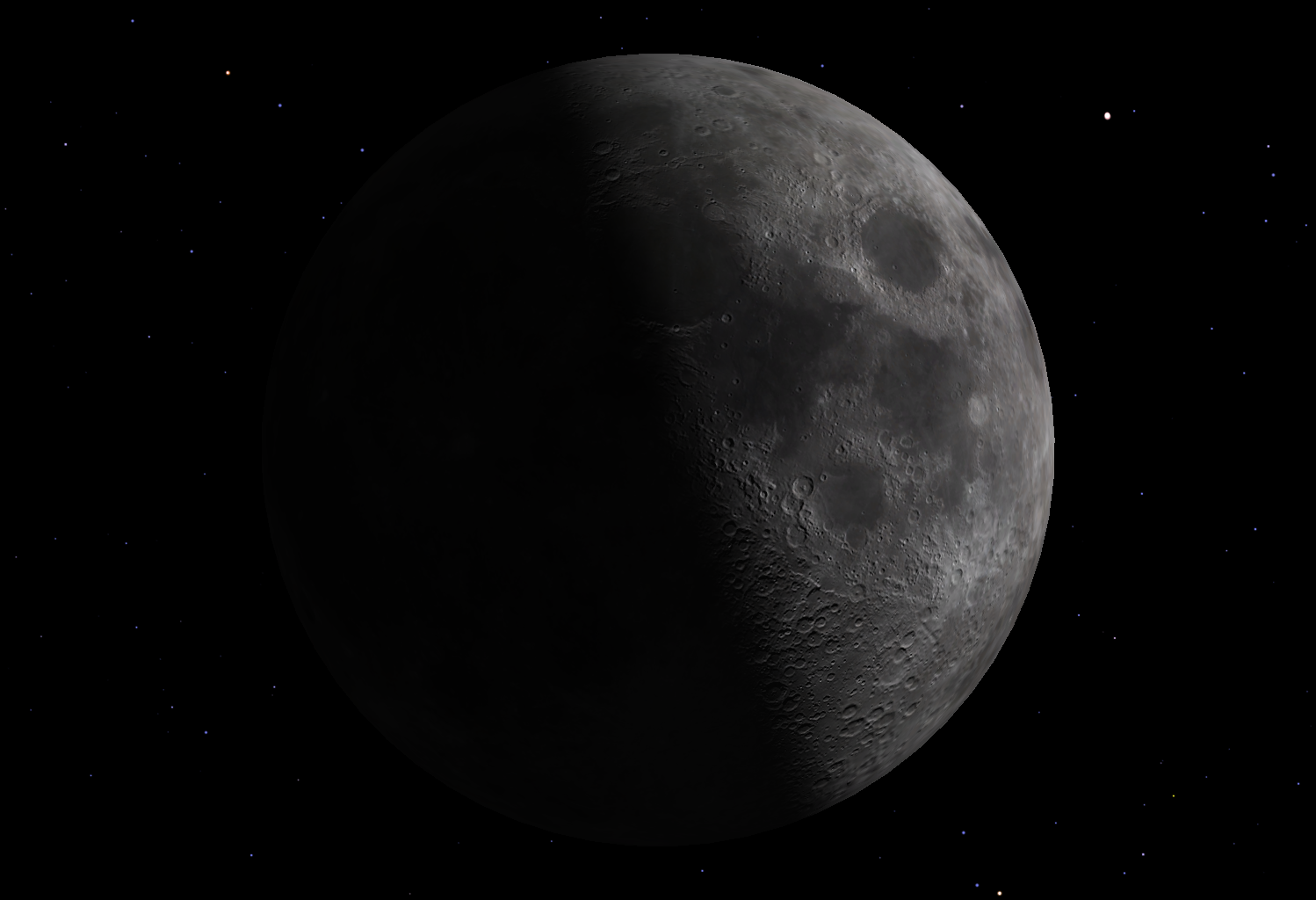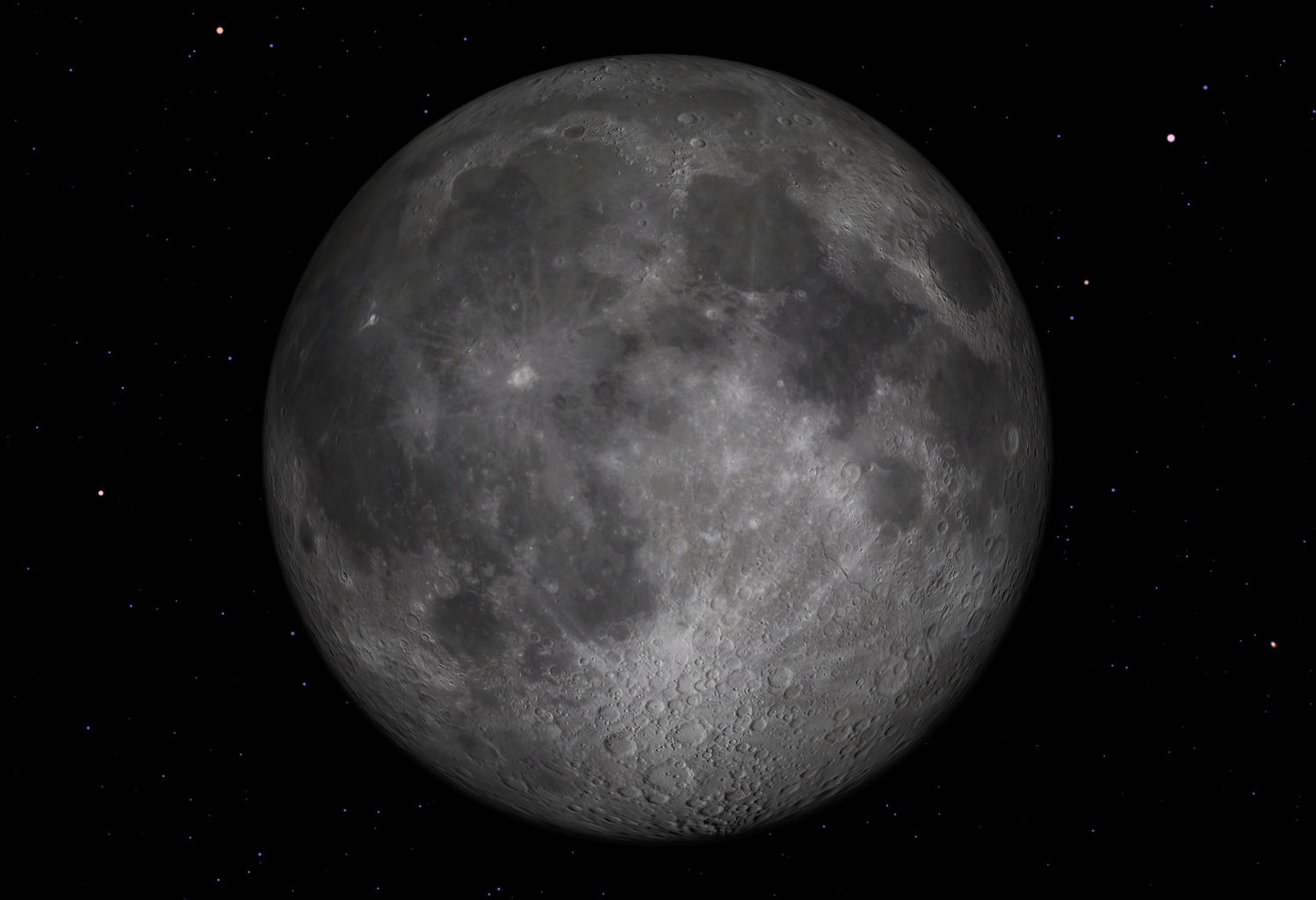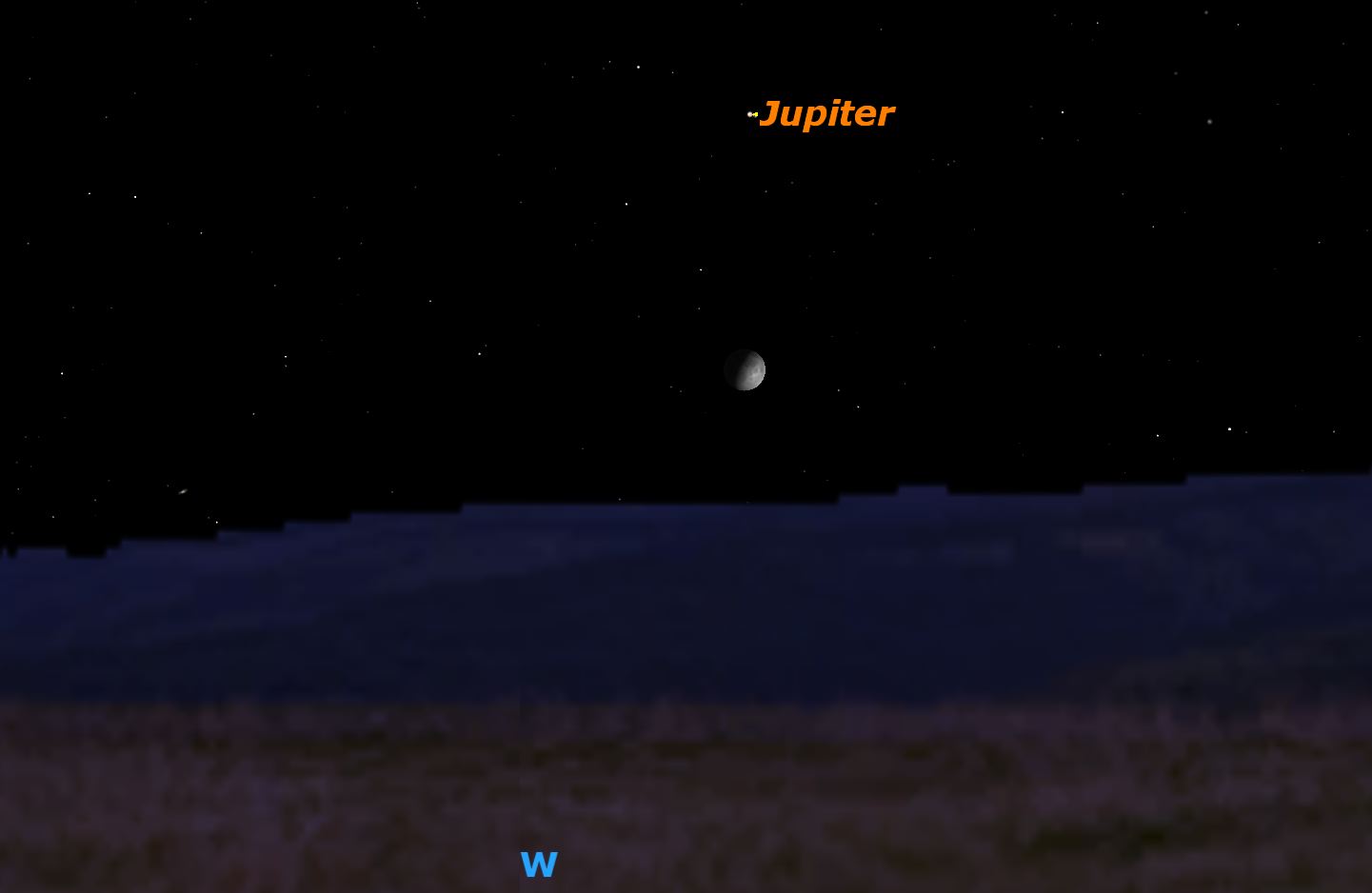<div data-cycle-pager-template=” ” readability=”31.803076923077″>
” readability=”31.803076923077″>
New Moon, May 2016
Friday, May 6, 3:30 p.m. EDT. The moon is not visible on the date of New Moon because it is too close to the sun, but can be seen low in the east as a narrow crescent a morning or two before, just before sunrise. It is visible low in the west an evening or two after New Moon.
<div data-cycle-pager-template=” ” readability=”28.9453125″>
” readability=”28.9453125″>
First Quarter Moon, May 2016
Friday, May 13, 1:02 p.m. EDT. The First Quarter Moon rises around 12:30 p.m. and sets around 2:30 a.m. It dominates the evening sky.
<div data-cycle-pager-template=” ” readability=”33.008130081301″>
” readability=”33.008130081301″>
Full Moon, May 2016
Saturday, May 21, 5:14 p.m. EDT. The May Full Moon is known as the Milk Moon, Flower Moon, or Corn Planting Moon. It rises around sunset and sets around sunrise; this is the only night in the month when the moon is in the sky all night long. The rest of the month, the moon spends at least some time in the daytime sky.
<div data-cycle-pager-template=” ” readability=”29.425675675676″>
” readability=”29.425675675676″>
Last Quarter Moon, May 2016
Sunday, May 29, 8:12 a.m. EDT. The Last Quarter Moon rises around 1:45 a.m. and sets around 1:15 p.m. It is most easily seen just after sunrise in the southern sky.
<div data-cycle-pager-template=” ” readability=”31.696774193548″>
” readability=”31.696774193548″>
Double shadow transit on Jupiter, May 2016
Saturday, May 7, 12:39–1:42 a.m. EDT. Shadows of Io and Callisto cross Jupiter simultaneously. The sun is behind us to the right, and Io is much closer to Jupiter than Callisto, so that its shadow is much closer to the moon casting it.
<div data-cycle-pager-template=” ” readability=”31.031578947368″>
” readability=”31.031578947368″>
Transit of Mercury, May 2016
Monday, May 9, 7:12 a.m.–2:42 p.m. EDT. For 7 1/2 hours, Mercury will be visible crossing the face of the sun. A telescope with proper solar protection and magnifying at least 60 times is needed to see Mercury’s tiny disk.
<div data-cycle-pager-template=” ” readability=”27.877300613497″>
” readability=”27.877300613497″>
Jupiter 2 degrees north of moon, May 2016
Sunday, May 15, 2 a.m. local time. The waxing gibbous moon will pass just south of Jupiter.
<div data-cycle-pager-template=” ” readability=”28.748466257669″>
” readability=”28.748466257669″>
Mars at opposition, May 2016
Sunday, May 22, 7 a.m. EDT. Mars is directly opposite the sun in the sky, and is visible all night long.
<div data-cycle-pager-template=” ” readability=”30.063559322034″>
” readability=”30.063559322034″>
Mars closest to Earth, May 2016
Monday, May 30, 6 p.m. EDT. Because of Mars’ elliptical obit, it is actually closest to Earth 8 days past opposition. This is the closest Mars has been to Earth since 2005.
<div data-cycle-pager-template=” ” readability=”28.03664921466″>
” readability=”28.03664921466″>
Mercury, May 2016
Mercury transits in front of the sun on May 9. It will be well placed in the morning sky for observers in the Southern Hemisphere after May 19.
<div data-cycle-pager-template=” ” readability=”23.846153846154″>
” readability=”23.846153846154″>
Venus, May 2016
Venus is too close to the sun to be observed.
<div data-cycle-pager-template=” ” readability=”30.271653543307″>
” readability=”30.271653543307″>
Mars, May 2016
Mars is in opposition to the sun on May 22, and closest to Earth on May 30. This is generally a good apparition, but Mars is low in the southern sky for northern observers. It is visible all night in Scorpius.
<div data-cycle-pager-template=” ” readability=”25.529411764706″>
” readability=”25.529411764706″>
Jupiter, May 2016
Jupiter is well placed in the evening sky in Leo. It sets around 3 a.m.
<div data-cycle-pager-template=” ” readability=”28.888888888889″>
” readability=”28.888888888889″>
Saturn, May 2016
Saturn is well placed in Ophiuchus, rising in late evening. Its rings are now spread widely, making it a beautiful sight in a small telescope.
<div data-cycle-pager-template=” ” readability=”25.89406779661″>
” readability=”25.89406779661″>
Uranus, May 2016
Uranus is low in the eastern sky in Pisces, rising just before the sun.
<div data-cycle-pager-template=” ” readability=”24.357142857143″>
” readability=”24.357142857143″>
Neptune, May 2016
Neptune is in the eastern morning sky in Aquarius.
 ” readability=”31.803076923077″>
” readability=”31.803076923077″>
 ” readability=”28.9453125″>
” readability=”28.9453125″> ” readability=”33.008130081301″>
” readability=”33.008130081301″> ” readability=”29.425675675676″>
” readability=”29.425675675676″> ” readability=”31.696774193548″>
” readability=”31.696774193548″> ” readability=”31.031578947368″>
” readability=”31.031578947368″> ” readability=”27.877300613497″>
” readability=”27.877300613497″> ” readability=”28.748466257669″>
” readability=”28.748466257669″> ” readability=”30.063559322034″>
” readability=”30.063559322034″> ” readability=”28.03664921466″>
” readability=”28.03664921466″> ” readability=”23.846153846154″>
” readability=”23.846153846154″> ” readability=”30.271653543307″>
” readability=”30.271653543307″> ” readability=”25.529411764706″>
” readability=”25.529411764706″> ” readability=”28.888888888889″>
” readability=”28.888888888889″> ” readability=”25.89406779661″>
” readability=”25.89406779661″> ” readability=”24.357142857143″>
” readability=”24.357142857143″>















Comments are closed.